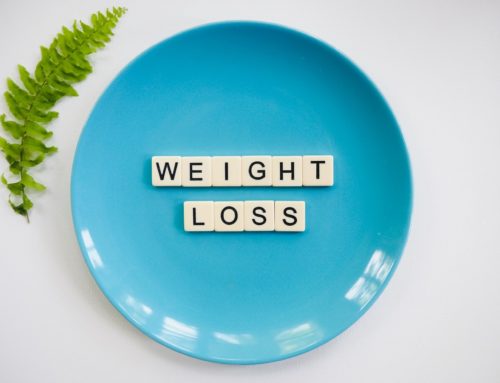Steroid Hormones Part 4: Female and Male Life Cycles
Before we look at hormonal imbalances, let’s get a quick understanding of the hormonal stages of the typical female and male life cycles.
Female Life Cycle
Once the female reaches puberty she has entered her reproductive years. To reach full reproductive maturity can take up to four years. It is also common for the initial menstrual cycles to be irregular for several months or years. The reproductive years last for approximately 30 plus years.
The next stage is called perimenopause. It marks beginning of the transition to menopause. This can be one of the more difficult stages for the modern female as things begin to change. Cycles and hormones now fluctuate creating more mood swings and fatigue. In addition there are more cycles without ovulation. Perimenopause officially ends with menopause which is considered to be 12 consecutive months with no cycle.
The biological wiring of the human female is for this process to take 2-3 years. However, it has become common for this transition to take 8-12 years in the modern female.
Menopause is the permanent cessation of menstruation due to loss of most ovarian function. There is another common misperception here. While it is true that ovarian estrogen and progesterone production have stopped, there can still be testosterone production. Therefore, the ovaries still do serve a purpose after menopause. The average age for menopause is 51. Smoking has been shown to accelerate the process by two years.
Menopause is known for some unpleasant symptoms, some of which are also experienced during perimenopause. Most of these originate with hormonal imbalances which we will discuss later. Menopause symptoms affect both the physical, mental and emotional bodies.
General physical symptoms include: hot flashes; night sweats; insomnia; dry skin, eyes, and sinuses; headaches; migraines; water retention and bloating; weight gain; liver and gall bladder congestion (leading to constipation); cold hands and feet; increased sugar cravings; muscle tension; increased risk of osteoporosis and cardiovascular disease; and loss of subcutaneous fat and increased wrinkling.
Symptoms affecting the reproductive system include: cystic or lumpy breasts; vaginal dryness, vaginal dysplasia and atrophy; more frequent urinary tract infections; and incontinence.
General mental and emotional symptoms include: poor memory and foggy thinking; mood swings; depression; decreased ambition; irritability; anxiety; anger; and decreased libido.
A variety of factors have been identified that affect these symptoms. Positive factors which reduce the symptoms include being in general good health and having a low stress lifestyle as the transition begins. These women typically have strong adrenals, a healthy thyroid, have a good balance of minerals, and normal cholesterol levels (220-240).
Factors associated with a greater likelihood of experiencing these symptoms include: obesity; chronic stress; adrenal fatigue; estrogen dominance; liver congestion; thyroid imbalance; and insulin resistance.
Male Life Cycle
Yes, there is such a thing as the “grumpy old man.” This is called andropause. While it does not receive all the attention of its female counterpart menopause, it is just as real and disruptive to the person experiencing it. The “official” definition of andropause is the loss of androgen dominance in men.
Andropause is different than menopause in that its onset is often gradual. The symptoms are often missed or treated as separate issues without recognizing the underlying change in male hormone status. The key hormone is testosterone. Once men reach around 40 years old their free testosterone levels (the active form) begin to decline 1-2% each year. You can see that it starts out slow, but 10-15 years or more down the road it is a significant drop from where the man was at age 20, 25, or 30!
Andropause impacts men on physical, mental, and emotional levels. Typical physical signs and symptoms include: loss of energy, strength, and stamina; gradually increasing fatigue; loss of libido, fewer spontaneous morning erections, and erectile dysfunction (ED); muscle soreness, weakness, and decreased muscle mass; thinning and dry skin; sleep problems; blood sugar problems, insulin resistance, and increased risk for diabetes; weight gain; increased fat in hips and breasts; increased risk for cardiovascular disease (increased cholesterol, triglycerides, and blood pressure); increased risk for osteoporosis; and increased prostate and urinary tract problems.
Typical mental and emotional symptoms include: low mood; irritability; depression; discouragement; pessimism; withdrawal from activities and relationships; concentration and memory difficulties; less productive, decreased initiative, motivation, and drive; and loss of libido.
Positive and negative factors affecting a man’s experience during andropause are similar to those described above impacting menopause.
It is important to note from our earlier discussion testosterone is made from cholesterol and plays an important role in maintaining healthy levels of cholesterol and triglycerides. Statin medications have been shown to lower testosterone levels.
Bernard Rosen, PhD is a Nutrition Consultant and Educator. He works with individuals, groups, and at corporations to create individualized nutrition and wellness programs. His office is in Coeur d’Alene, ID. To learn more or to schedule an appointment, e-mail at bernie@brwellness.com, call (208) 771-6570 or go to www.brwellness.com.







